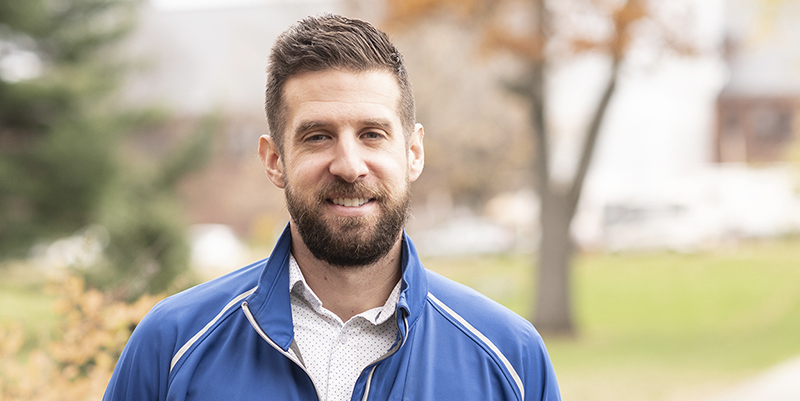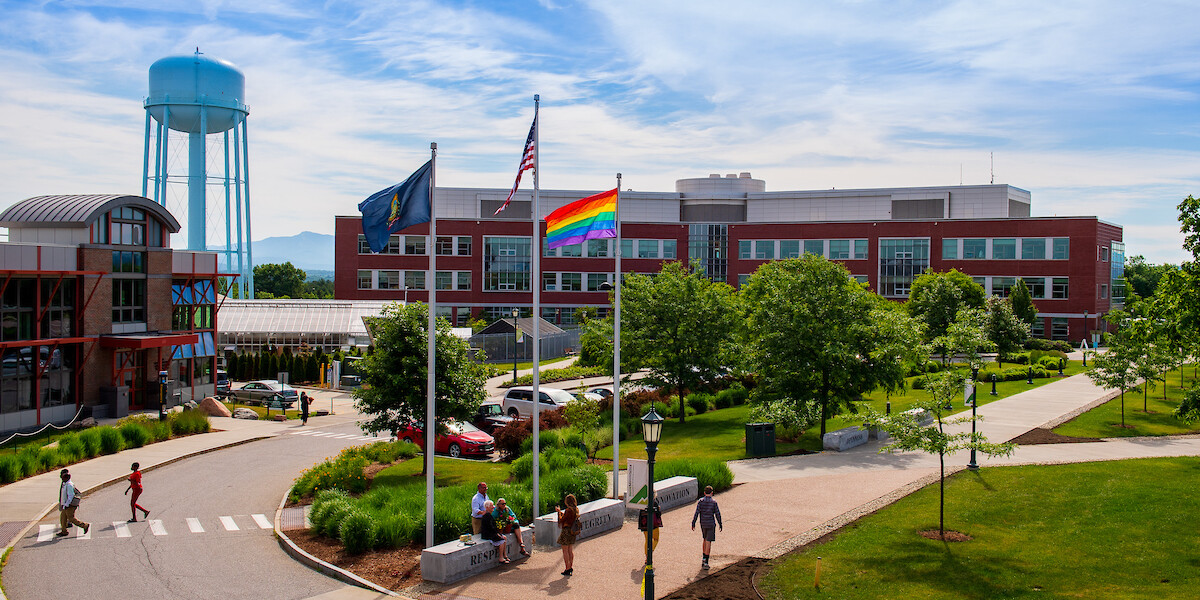How can schools prevent and respond to gun violence?
UVM Assistant Professor Justin Garwood, Ph.D., designed a course to address the crisis of school-based gun violence, which has escalated in the United States over the past 20 years.
The course, “Preventing and Responding to School Shootings,” covers historical perspectives on school safety and theories on the sources of violence in schools. More importantly, it focuses on relationship building as an antecedent intervention, and action steps to help prevent further school tragedies.
“The course is not about the second amendment, arming teachers, or profiling students,” Garwood says. “By definition, anyone who wants to shoot people in a school is experiencing mental health issues. But what can we do in schools to help students and identify their cries for help without stigmatizing mental health disorders?”
In 2019, there have been 83 incidents of gunfire on school grounds so far, resulting in 12 deaths and 28 injuries, according to data compiled by Everytown for Gun Safety, a nonprofit that advocates for gun control and against gun violence.
The FBI says there is no profile of a school shooter, although the majority are male and white. Still, there are many variables, Garwood explains. Only 15 percent of school shooters have disciplinary issues, while the majority of attackers are academically successful students. But most are dealing with internal struggles.
Talking about Gun Violence
Garwood’s online course, (previously titled “Thwarting Gun Violence in Schools”) attracts a broad spectrum of undergraduate and graduate students who are studying everything from education to counseling to community and international development.
Graduate student David Couture, who is a special educator in Montpelier, enrolled in the course last summer.
“This course is really about relationships, and how there tends to be a lack of relationships with people who resort to violence,” Couture says. “The course is about connecting with kids, making sure relationships are built, and that we are supporting kids socially and emotionally.”
After arriving on campus in 2018 to teach in UVM’s Special Education Program, the first course Garwood taught at UVM was “Behavior Management in the Classroom.” One of his students, Annie Bedell, suggested he design a course specifically about gun violence in schools.
Bedell, a secondary education major, spent her early elementary school years in Newtown, Connecticut, and relocated to Vermont before the 2012 Sandy Hook school shooting. School shootings were talked about in Garwood’s Behavior Management course, but Bedell thought there was value in devoting an entire course to gun violence in schools.
“…We often talk about (school shootings) when they occur, but then the conversation doesn’t continue,” Bedell says. “I shared with Justin how important of a topic this was to not only me but to all future teachers as we approach being in the classroom.”
Garwood listened to Bedell’s suggestion and designed the course, which was offered for the first time last summer.
Building Positive Relationships in the Classroom
After graduating from SUNY Brockport with a degree in English, Garwood thought he would attend law school. Instead, he found himself drawn to education, spending time teaching general and special education students. Garwood earned his master’s degree in secondary education from Vanderbilt University and his doctoral degree in special education from the University of North Carolina at Chapel Hill.
“I enjoy teaching the most when I have a connection with kids,” he says. “I believe that any intervention we do will be more successful if the student has a positive relationship with their interventionist.”
Garwood’s research and teaching focus on students with and at risk for emotional and behavioral disorders (EBD) across three areas: pre-service preparation and teachers’ use of relationship-based pedagogy, academic interventions, and classroom management.
He has a grant under review with the Department of Education to study educators who are working with students with EBD and are experiencing burnout. He wants to research how high-quality relationships between educators and students tend to lower educator burnout rates. For a separate grant, he intends to develop a measure that middle and high school students use to self-report on their mental health.
Listening, Connecting, and Making a Difference
More than anything, positive relationships between educators and students are at the root of Garwood’s work.
In his Preventing and Responding to School Shootings course, he requires students to read “Somebody Else’s Kids” by Torey Hayden, who recounts her work as a self-contained teacher serving students with extreme EBD. Hayden’s message is ultimately about how she could connect with her students, no matter what their limitations, and make a difference in their lives.
“It’s from Torey Hayden’s books that I developed my teaching method,” Garwood says.
Garwood’s teaching style gets high marks from UVM students, who describe him as supportive, flexible, and an excellent listener. He admires UVM students just the same.
“Students here challenge me and they aren’t afraid to question me or have a debate,” he says. “I find that leaning into those disagreements with students and listening makes you a better teacher.”
Preventing and Responding to School Shootings is regularly offered in the Summer semester. See the selection of Summer University courses for educators.
-The “UVM Is” series celebrates University faculty, educators, staff, and the campus community.




